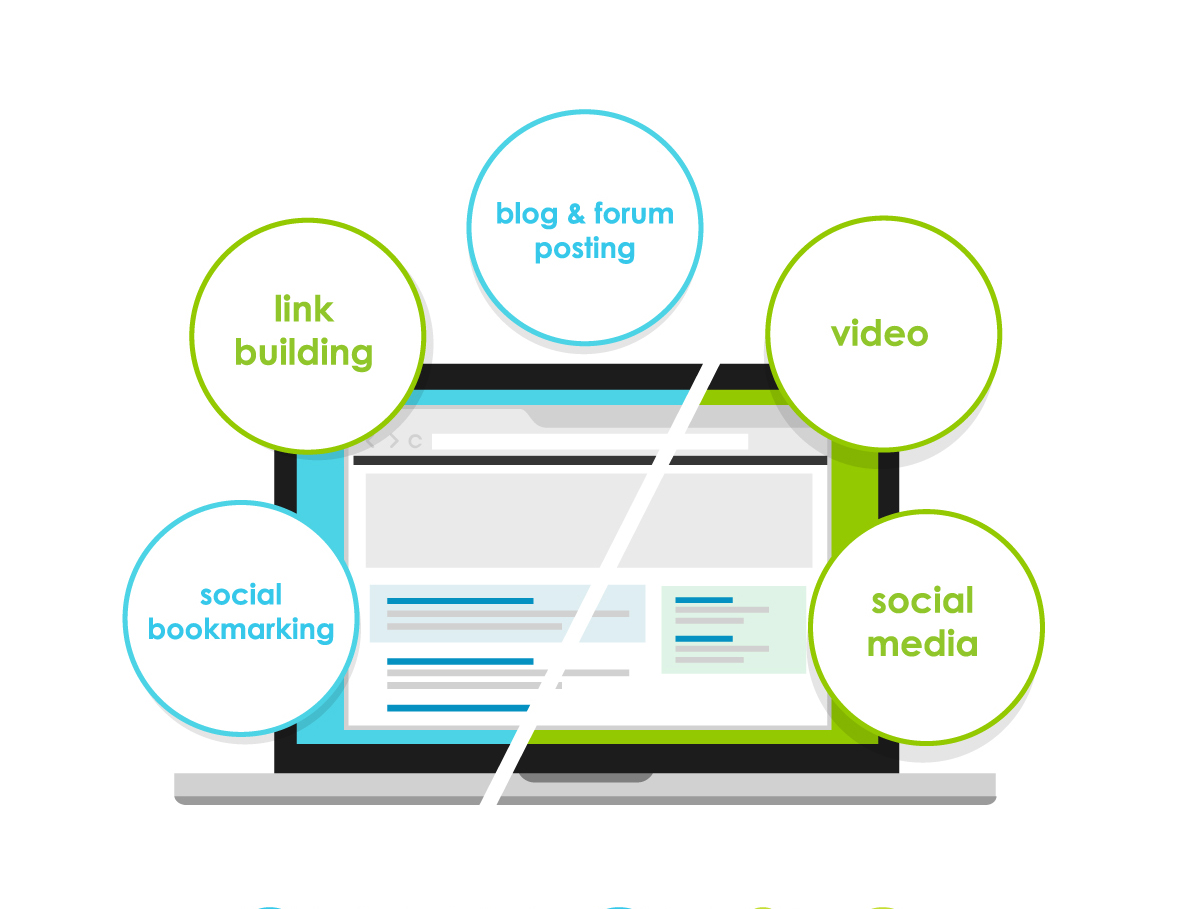What is a website redesign?
Its website is the bedrock of every organization’s online presence in an ever-changing digital ecosystem. It’s a virtual store where people can browse goods, make decisions, and build trust with the company. No matter how well-organized a website is, it will ultimately require a revamp to keep up with current trends and remain appealing. Redesigning an existing website to improve its functionality, aesthetics, and utility is a website redesign.
It’s more than just giving the site a makeover; it’s about bringing it up to date with the company’s present-day objectives, its target demographic, and the industry’s accepted standards. Website redesign companies like JDM Web Technologies often help businesses find the right direction in their respective industries to attract new traffic and revamp their business identity entirely.
Website objectives
The first step in redesigning a website is setting clear objectives. To guide the shift, you must first define its scope by defining specific targets, goals, and quantifiable indicators. Whether it’s to enhance the user experience, improve conversion rates, or adhere to evolving industry standards, ensure the redesign’s goal is clear. Determine which metrics, such as page views, conversion, and bounce rates, are most pertinent to your goals. By establishing an in-depth set of goals and related metrics, you can efficiently guide the redesigning procedure while laying the groundwork for a verifiable roadmap to success.
Website effectiveness audit
Auditing your own web capabilities is critical. SWOT analysis lets you assess your website’s abilities, shortcomings, possibilities, and dangers. Industry analysis is necessary to recognize trends and best practices. This strategic evaluation enables organizations to adapt their online strategy to changing marketplace dynamics for a robust and optimized digital presence. Organizations can solidify their digital foundations and broaden and adapt to the ever-evolving digital ecosystem by thoroughly investigating their capabilities and harmonizing with industry norms.
Identify the gaps
You need to look in-depth at individuals, process flow, and technology while making an outline for your website’s infrastructure. Identifying possible bottlenecks or functional weaknesses by analyzing each component is possible. Particularly in the area of user experience (UX) improvement, breaking down website elements becomes vital. It can be done to make targeted adjustments by identifying particular issues, such as a poorly placed call-to-action (CTA) button, an incomprehensible online form, or anything that diverts or baffles visitors.
Prepare a road map
It is crucial to define particular actions and use suitable equipment to fix identified weaknesses in your website’s infrastructure when they have been identified. One successful strategy is to do A/B testing on the challenging parts. Find out which design is most appreciated by your target demographic by testing out various iterations. Use this information to help create a more sophisticated wireframe design that resolves any issues you find. An elegant and swift digital interface is the result of utilizing state-of-the-art technology. With this strategic combination of data-driven decision-making and technical innovation, you can fix current deficiencies and progress your website toward an optimized, user-centric experience.
Understanding website goals might enhance redesign performance. Technical aspects involve picking a color scheme, typefaces, logos, button colors and positioning. The content management system, programming language, and other technical criteria are crucial for coding. Defined site objectives give rise to these selections, which allows an all-encompassing and purpose-driven redesign that considers visual aspects and code infrastructure to boost and enhance digital presence.
Top 6 Reasons When and Why You Should Redesign Your Website
Various factors prompt companies to undergo website redesigns, and a detailed exploration of some of these reasons follows in the subsequent sections.
Rebranding or repositioning
One strategic marketing approach is rebranding, which is centered around changing how people see an organization. This strategy is vital for distinguishing a business apart from competitors and is required in some cases, such as mergers. Another instance in which rebranding is unavoidable is when:
- Facilitate expansion
- Restore a diminished brand identity
- Modernize an obsolete website
- Adjust for new or modified products and services
Rebranding is more than just modifying a business’s name or logo; it’s about identifying the right opportunity for your brand to impact consumers. Adjusting your website’s aesthetic and other visual components is part of this process to ensure that all of your marketing materials communicate effectively. Put your brand’s message out there with the assistance of pitch decks, proposal blueprints, brochures, and one-sheet fliers.
For instance, consider how Siemens underwent a brand reinvention, recognizing the necessity to be perceived as innovative and align with the nature of their products and services. They revitalized their brand to embody “ingenuity for life,” blending technology with purpose. The relaunch manifested their entrepreneurial and innovative spirit across all marketing materials.
The goal of brand repositioning is to transform how consumers perceive the brand. The objective is to influence the way consumers experience a brand in the marketplace. Market positioning, often known as brand positioning, is a brief overview of a brand’s position and purpose within the larger market, emphasizing the unique advantages that it provides consumers.
For example, in contrast to Tesla and Audi, which depict a picture of luxury, Starbucks advertises itself as a seller of coffee of a higher caliber. On the other hand, McDonald’s and Wendy’s are seen as innovative innovators or vendors of fast foods that are favorable to one’s budget. Poor conversion rates or changes in the external environment may be a catalyst for repositioning to develop a distinctive and intriguing brand perception. For example, IKEA has relocated its retail location online, showing broad interior solutions in a more organized manner than had been available on its prior website. The debut of a chatbot that acts as a sales assistant and accompanies customers through online purchasing contributes to enhancing the personalized touch.
When repositioning a brand, research is indispensable. Organizations must first pinpoint a particular market niche and then create effective interactions with clients and prospects to determine if they are accomplishing their positioning goals.
Keep an eye on what other companies are up to; a competition analysis may help you determine where you rank in the market by revealing your company’s advantages and disadvantages. To guarantee the platform’s success, the positioning exercise maintains fundamental principles. Here are the principles:
01
Be Different
Achieving success requires emphasizing your value proposition. One of the most significant tasks to do is to figure out what it is that makes your brand special. As an example, Apple has presented itself as a tech business that offers new products that are straightforward for users to comprehend and use, setting its iPhones above other Android phones.
02
Be focused
Apple has always specialized in an obscure market by developing inventive, user-friendly products. The transformation of the iPod into the iPhone is an excellent instance of Apple’s laser-like level in the future.
03
Be relevant
Humanizing technology is at the core of Apple’s identity as a brand, enabling the company to stay updated and relevant. Apple has always put a premium on making technology work effortlessly in people’s lives, taking a user-centric approach that adapts to consumers’ changing demands and expectations.
04
Be simple
Simplicity is the ultimate sophistication.” was the key message of Apple’s first marketing brochure in 1977. This summarises Apple’s strategy of establishing profound relationships with its intended consumers by creating required goods with relaxing, stimulating, and clean designs.
When rebranding and repositioning a company’s website, those in charge should be accurate and in agreement. Before beginning such a revolutionary process, extensive internal talks and careful thought must be given due to the enormous time and resources required.
When releasing a new product or service
When releasing a new product line, redesigning an existing product or service line to incorporate new features and functions is an ordinary need. Companies embark on this path for various reasons, including repositioning themselves in the competitive landscape and rebranding themselves. Still, you’ll need a lot of assistance from your development team and the design resources to figure it out.
Start with a Minimum Viable Product (MVP) wherever possible. This method aims to roll out a new feature selectively, either on some sites or with restricted capability. Use minimum viable products (MVPs) to show effect and quickly get funding for more development.


Adding more functionality to a website
If you are interested in including novel features in your website, you will unavoidably have to make modifications to the layout that is currently in place. Because website functions directly influence the outcomes of a business’s operations, it is of the utmost significance to make sure that the feature in question follows your company’s overall objectives. Take, for example, the situation of eCommerce, where customers typically look for specific products. Using a chatbot on product pages to improve the overall experience of site visitors is a smart move; however, improving the backend to ensure smooth integration into your website is required.
Conversion optimization guided by data-backed insights
The objective of conversion rate optimization (CRO) is to boost the conversions made by your present customer base rather than just boost the total number of visitors to your site. With this predetermined strategy, you won’t have to worry about constantly obtaining new traffic. Data-driven knowledge of user behavior and preferences is essential in CRO, which is why it’s essential to corroborate insights with facts. Businesses can boost conversion rates without stressing about getting additional customers by making better use of the traffic they already have and making data-driven modifications to the user experience.

Quantitative data:
To get a good amount of quantitative data, here are some questions that you could ask:
- 1. What pages attract the largest share of traffic?
- 3. What sources or mediums contribute to the highest converting traffic, and what factors contribute to their effectiveness?
- 5. Which product pages exhibit the lowest exit rates, and what attributes contribute to this retention?
- 2. At what stage do visitors tend to drop off from our site?
- 4. Which sources or mediums generate significant traffic but yield minimal conversions, and what factors may influence this outcome?
- 6. For which products is the impressions-to-checkout ratio the highest, and what factors contribute to this ratio?
Qualitative Data:
In Addition To Analytics, It Is Essential To Interact Directly With Real Individuals, Such As Your Prospects Or Customers, To Gain Valuable Insights From:
- Surveys
It is possible for you to gather essential data by conducting surveys on your website or by sending emails to your site’s visitors or users and asking them questions. - Interviews
Given our inherent tendency to tell stories, human discussions are unmatched by any other conversation. When doing an interview, it is advised to preformulate your questions in a clear and concise approach. This will enable you to extract pertinent data from the interviewee while creating a narrative during the conversation. - Focus Groups
In terms of effective methods for collecting information in a brief period, multiple methods stand out. You can quickly gather relevant data for your website by using a sample size ranging from twenty to fifty and by using quiz types such as preference tests and click tests. - Oral History/Transcription
A story told orally from the narrator’s unique point of view. In a more precise sense, it is the process of gathering, storing, and making sense of past understanding. You can also use this as a source of data for your redesign tests.
When done right, incorporating ideas from both qualitative and quantitative data into your CRO project may significantly boost the number of sales. These tips primarily help you in the subsequent phase of your CRO journey by giving you valuable data that you need to put to use to improve your website’s sales. Sometimes, these optimizations indicate that you must reconsider how your website works or looks, which implies that you need to redesign your site to get higher conversion rates completely.
Steps for planning a website redesign
1. Conduct in-depth user research for better performance
The first step in redesigning a website is to take a look at its present state. It is crucial that you stay apprised of the issues that exist with your present website. A thorough, comprehensive review of four crucial elements is vital:
1.
Usability
In order to be certain that your potential customers are able to easily observe, participate with, and navigate around your website, it is crucial to ensure that they are capable of fully understanding the key point that your company communicates when they visit your homepage. A variety of elements, such as the responsiveness of a website, its speed, its degree of security, and the user-friendliness of its menu choices, all influence the user experience.
Speero undertook comparison research with the goal of finding out which of the four companies’ mobile websites for beauty and cosmetics was the most successful. The participants were asked queries addressing the following:
- ➔ The simplicity with which one can navigate the website is centered around beauty and cosmetics.
- ➔ Difficulties that they experienced while dealing with their website.
- ➔ The website’s user-friendliness in terms of navigation.
- ➔ Factors contributing to navigation issues.
According to the study, users enjoyed rapid loading times, accurate filtering, and effective sorting systems. Problems surfaced while managing inefficient page loading, bad navigation, weakness, and difficulties with modification. Having simple-to-use categories, filters, and filtering capabilities, as well as safe and secure checkouts, contributed to a good user experience. Conversely, websites with excessive content and complex forms have been linked to maritime issues, highlighting the necessity for a clean, easy-to-use online space.
2.
Content
Your website’s content is the most crucial component of its design. Understanding what content your users find appealing is of the utmost importance when you are redesigning. Think about how you may pique your audience’s interest using new aspects. User testing, user experience reports, heat maps, session recordings, user-centric notions, and testing that corresponds to the behavior of potential consumers are all essential elements of a data-driven content strategy that successfully integrates these principles.
For obvious reasons, as a website owner, you want people to easily find what they’re searching for, comprehend the primary concepts, and proceed through your sales funnel. At the same time, make sure the content is pertinent, simple to follow, and grammatically correct for your audience.
3.
Search Engine Optimization (SEO)
Understanding user intent is fundamental to search engine optimization (SEO), as fulfilling user desires is a prerequisite to rising in the ranks. Empathy is key when trying to figure out what a user is trying to say. From a technical point of view, search engine optimization (SEO) is vital to ensure your website is swiftly and easily found by your clients.
Images without alt text, poorly implemented HTML elements, and irrelevant keywords make it tougher for Google crawlers to find a page. Search engine optimization (SEO) assessments employing tools like SEOptimer and Website Grader can assist you in finding major optimization errors on your website.
4.
Conversions
The information potential customers seek should be readily accessible on your homepage. There can be a disparity between your objectives and the demands of your target demographic if people are quickly clicking out of your site. There has to be an intentional link between the intended conversion objective and each interaction a prospect has with your website. If your website’s conversion rates have been dropping, you may want to look into the following questions to discover possible obstacles:
- 1. What functions does your website currently fulfill?
- 2. If your website didn’t exist, what impact would that have?
- 3. What unique niche does your business occupy that distinguishes you from others?
- 4. Is there a tagline highlighting the unique selling proposition (USP) of your services?
- 5. Who comprises your ideal customer base? Are they individuals or organizations? Do you understand their background, and how do they discover your business?
For instance, Yelp successfully altered its conversion strategy by shifting from a location-based approach to providing experience-based information.
2. Establish defined objectives and identify key performance indicators (KPIs) for monitoring.
Before you start redesigning your website, ensure you have a solid grasp of its intended goals and results. For what purpose did you even bother embarking on this project? Despite what you choose to reply to this question, you must be certain about it. The SMART framework is a tried-and-true method to minimize the degree of difficulty in setting objectives for a redesign.
Specific
The website’s goal needs to be precisely and clearly stated so that no one is misled. There will be less guesswork and more accuracy in getting the job done if the goals are precise and well-defined before starting.
Measurable
A website must have quantifiable, objective goals that are necessary for its success. It is essential to establish quantitative standards to evaluate development and success in obtaining the intended results.
Actionable
This component serves as the action stage within your goal-setting process. Accurately outlining what is needed and delegating duties is crucial for ensuring the accomplishment of the goal. Accountability and well-defined instructions enhance the achievement of objectives.
Realistic
Realistic objectives are an essential basis for success; therefore, it’s essential to be practical while developing them. The best way to ensure that your goals are realistic and within grasp is to set them in tandem with your genuine beliefs about what is possible.
Time-based
Clarity is key while setting goals, and setting a particular due date will act as a driving factor in your pursuit of achievement. Your search for success will be more precise and driven by a well-defined deadline.
Creating successful website redesign strategies and roadmaps
Redesigning your website from the ground up is not an easy task, especially when you want to maximize its efficacy for a company of any size. Reducing stress during a makeover can be done with considerable research, careful preparation, and applying imagination.
Set a goal
Find out if a redesign is required by evaluating what you expect for the new website. This can assist you in streamlining your efforts. In order to remain organized and motivated during the redesign process, it is essential to put together a list of specific and feasible objectives, such as increasing site traffic and minimizing bounce rates.Develop a (UCD) user-centered design
The core concept behind User-Centered Design (UCD) is to recognize the user—their desires, beliefs, skills, and limitations—inside and out. Statista reports that mobile devices make up more than half of all web traffic; in order to draw in this rapidly growing demographic, your site must be mobile-friendly.Introduce the UI redesign
Picture the UX design as the car and the UI design as the dashboard. Before you start redesigning your present site, you should inventory all the interfaces. The process begins with compiling all the elements that jointly make up your interface, including typography, content (including text, photos, and logos), and typefaces. Develop user interfaces within an integrated structure with this extensive collection. User interface design should be straightforward, encouraging visitors to finish small conversions on your website.For instance, while redesigning your website, consider improving the onboarding process. Make this approach more innovative, so you can find out how simple it is for consumers to join up or register on your landing page or homepage, which will motivate them to investigate your site further.
Redesign the website information architecture (IA)
Emphasizing user requirements awareness is an essential part of effective information architecture. An in-depth evaluation of your website’s content and framework is the first step towards enhancing IA. It can be helpful to carry out a card sorting activity to determine the complex website elements that are prompting users to leave. These practices, when added to other user-centered design techniques, provide a more advanced process that will greatly help your redesign attempts.After a content audit, organize your material into order of priority and put a card sorting activity into action. Afterward, optimize your website by implementing A/B testing with dependable A/B testing tools to determine which elements work best.
Create the revamped wireframes
During a website overhaul, multidisciplinary groups could utilize a wireframe as an outline. Start doing usability evaluations on mockup ideas after you have an early outline. This can help you find unforeseen findings that you can include in your redesign strategy.Focus on your content
Helping people find what they’re looking for while finishing activities should be your website’s main objective. Keeping your content up-to-date while offering quality, timeless information is of the utmost significance. The redesign should focus on the users, with concise and straightforward messaging to help them do what they have to do.Layout resourcefulness and adaptability
Think about how versatile your website will be when you restructure it. In order to keep things new and functioning properly, it should be simple to make the necessary modifications. A modular design guarantees efficiency, which ultimately saves time and resources.Launch the redesigned website
Create and adhere to a go-live checklist, ensuring you thoroughly check your work before releasing it. If the redirects and on-page elements are not ready or tested, do not move ahead with the launch. Involve your community, connect on social media, and send out emails advertising the new website design so you can make the most of your website’s advertising potential.Steps involved in a website redesign that JDM provides
An SEO audit, which identifies links on your website, is the first phase in steering content. First, sort your content types into subcategories and look at the navigation bar at the top of your webpage. Search for particular page titles for more information; you’ll discover that blogs have the most content. A content prototype based on conclusions from user testing can be more easily created with the help of card sorting. SEO boosts a website’s discoverability by adjusting several aspects. Make sure to do an in-depth investigation during the redesign process, including adding new feature items, by evaluating SEO using tools such as Website Grader or SEOptimer.
Research informs redesign wireframe and interactive prototype decisions. Wireframing and prototyping are required with menus, breadcrumbs, links, web pages, applications, and information architecture. Team alignment and website flow and functionality need collaboration. The redesign encompasses usability testing employing low-fidelity prototypes to maximize design with generative and evaluative input. Design improvement in development is resource-intensive, making the design optimal for revisions.
Development involves creating a site map-structured website with unfilled pages or shells after research and ideation. Functionalities, including operational content management system elements, are tested. Developers and designers have to collaborate well to implement changes all through design. Do not make modifications after this phase; test on the prototype instead.
When a website has been finished, its designer examines it for errors, accessibility, and browser compatibility. It is essential to adhere to the most recent web development standards. Once the development team approves, you can transfer the website’s files to the server using an FTP program. In addition to designing websites, web designers can advise clients on or register and host domain names. Websites go through a final run-through test after setup to ensure they work flawlessly.
Website redesign best practices that We Follow At JDM
Consumers are looking for authentic digital interactions characterized by coziness, accessibility, and intimacy. An individual brand voice affects many user touchpoints, from advertisement to social media and customer service. Prioritizing user-centricity and developing target personas requires extensive market and user research. Website performance and user experience are paramount, as persistently slow mobile pages may jeopardize organic search rankings and usability. It is critical to recognize that users expect quick and smooth experiences. To get high search engine results page (SERP) ranks, it is important to empathize with people, understand their purchasing intention, and evaluate search queries. Calls to action (CTAs) on websites, emails, and blogs increase conversion rates and lead generation.
Contact Us
If you are looking to redesign your website, JDM Web Technologies is the company you should approach. We have website design and development experts working with us, with years of experience and have all the necessary information required for the redesign project. Reach out to us at [email protected] or call us at +1 305-468-0494 to know more about our services and pricing structure.















